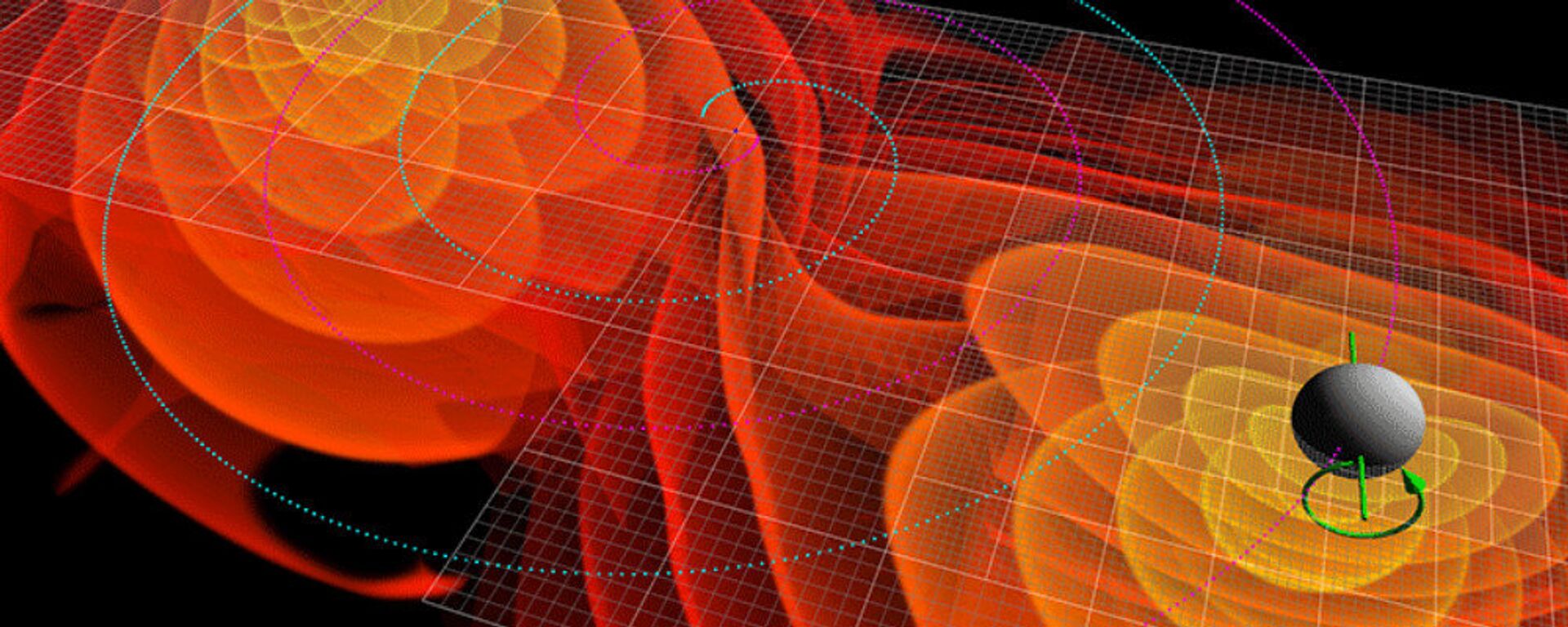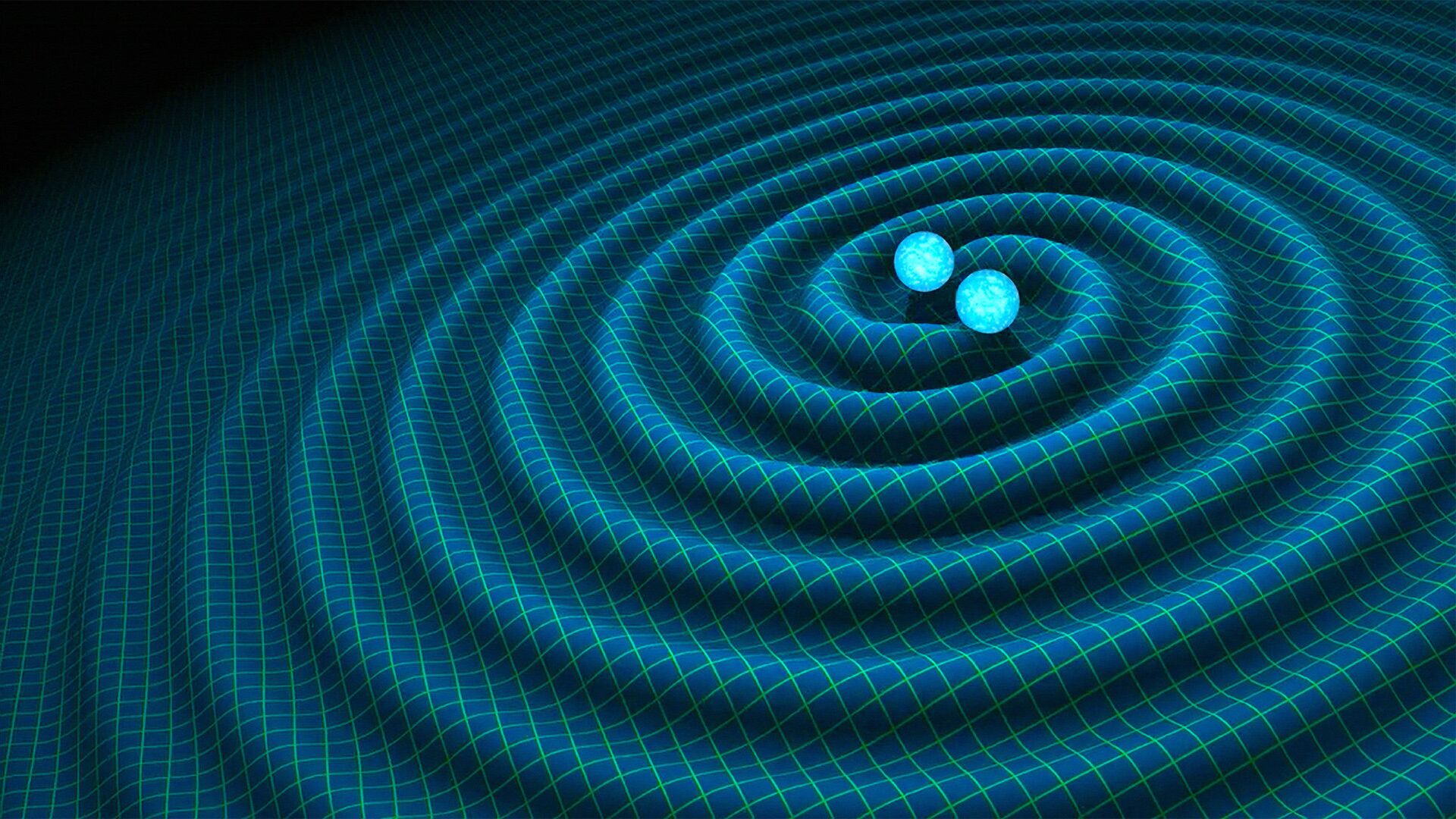https://sputnikglobe.com/20210922/gravitational-waves-or-cosmic-rays-strange-signals-reportedly-picked-up-by-tabletop-detector-1089305127.html
Gravitational Waves or Cosmic Rays? Strange Signals Reportedly Picked Up by 'Tabletop Detector'
Gravitational Waves or Cosmic Rays? Strange Signals Reportedly Picked Up by 'Tabletop Detector'
Sputnik International
The researchers now reportedly intend to develop an upgrade of the detector and to extend their reach "to even higher frequencies, where no other experiments... 22.09.2021, Sputnik International
2021-09-22T15:20+0000
2021-09-22T15:20+0000
2021-09-22T15:21+0000
science & tech
detection
signals
gravitational waves
https://cdn1.img.sputnikglobe.com/img/103589/16/1035891674_1:0:1921:1080_1920x0_80_0_0_2b0ca3d8e12cb664858e7c18a86e38b3.jpg
A pair of mysterious signals has been detected via a "tabletop gravitational wave detector" designed by scientists from the University of Western Australia, Science Alert reports.According to the media outlet, while it wasn’t immediately clear what these signals are or where they come from, one of the possible causes could be high-frequency gravitational waves, which "have never been recorded before," with the detector in question being made specifically to detect such waves.The detector itself is comprised of the so-called bulk acoustic wave (BAW) resonator – a disk of quartz crystal "with one side slightly convex." The disk is cryogenically cooled in order to to reduce thermal noise, with "conducting plates placed at very small distances from the crystal" picking up "minute piezoelectric signals generated by the acoustic modes vibrating therein," as the media outlet puts it.Another component of this setup, a superconducting quantum interference device, serves as a signal amplifier.The researchers reportedly conducted two observing runs with their creation, both in 2019, and each time the signals were detected.The media outlet notes, however, that aside from the high-frequency gravitational waves, the signals may been caused by "disturbances caused by topological defects in dark matter," massive dark matter particles, cosmic rays, a meteor shower, or perhaps even by the "relaxation of mechanical stress inside the quartz disk."The researchers now reportedly plan to bring forth a new version of their detector, which would include a second crystal with its own superconducting quantum interference device, and a muon detector, with Tobar saying that they intent to extend their reach "to even higher frequencies, where no other experiments have looked before."
https://sputnikglobe.com/20210101/gravitational-waves-could-be-scrambled-to-reveal-missing-piece-in-puzzle-of-the-universe-1081627353.html
Sputnik International
feedback@sputniknews.com
+74956456601
MIA „Rossiya Segodnya“
2021
News
en_EN
Sputnik International
feedback@sputniknews.com
+74956456601
MIA „Rossiya Segodnya“
Sputnik International
feedback@sputniknews.com
+74956456601
MIA „Rossiya Segodnya“
science & tech, detection, signals, gravitational waves
science & tech, detection, signals, gravitational waves
Gravitational Waves or Cosmic Rays? Strange Signals Reportedly Picked Up by 'Tabletop Detector'
15:20 GMT 22.09.2021 (Updated: 15:21 GMT 22.09.2021) The researchers now reportedly intend to develop an upgrade of the detector and to extend their reach "to even higher frequencies, where no other experiments have looked before."
A pair of mysterious signals has been detected via a "tabletop gravitational wave detector" designed by scientists from the University of Western Australia, Science Alert reports.
According to the media outlet, while it wasn’t immediately clear what these signals are or where they come from, one of the possible causes could be high-frequency gravitational waves, which "have never been recorded before," with the detector in question being made specifically to detect such waves.
"It's exciting that this event has shown that the new detector is sensitive and giving us results, but now we have to determine exactly what those results mean," said Michael Tobar, a physicist from the University of Western Australia. "With this work, we have demonstrated for the first time that these devices can be used as highly sensitive gravitational wave detectors."
The detector itself is comprised of the so-called bulk acoustic wave (BAW) resonator – a disk of quartz crystal "with one side slightly convex." The disk is cryogenically cooled in order to to reduce thermal noise, with "conducting plates placed at very small distances from the crystal" picking up "minute piezoelectric signals generated by the acoustic modes vibrating therein," as the media outlet puts it.
Another component of this setup, a superconducting quantum interference device, serves as a signal amplifier.

1 January 2021, 12:08 GMT
The researchers reportedly conducted two observing runs with their creation, both in 2019, and each time the signals were detected.
The media outlet notes, however, that aside from the high-frequency gravitational waves, the signals may been caused by "disturbances caused by topological defects in dark matter," massive dark matter particles, cosmic rays, a meteor shower, or perhaps even by the "relaxation of mechanical stress inside the quartz disk."
The researchers now reportedly plan to bring forth a new version of their detector, which would include a second crystal with its own superconducting quantum interference device, and a muon detector, with Tobar saying that they intent to extend their reach "to even higher frequencies, where no other experiments have looked before."
"The development of this technology could potentially provide the first detection of gravitational waves at these high frequencies, giving us new insight into this area of gravitational wave astronomy," he explained. "The next generation of the experiment will involve building a clone of the detector and a muon detector sensitive to cosmic particles. If two detectors find the presence of gravitational waves, that will be really exciting."


